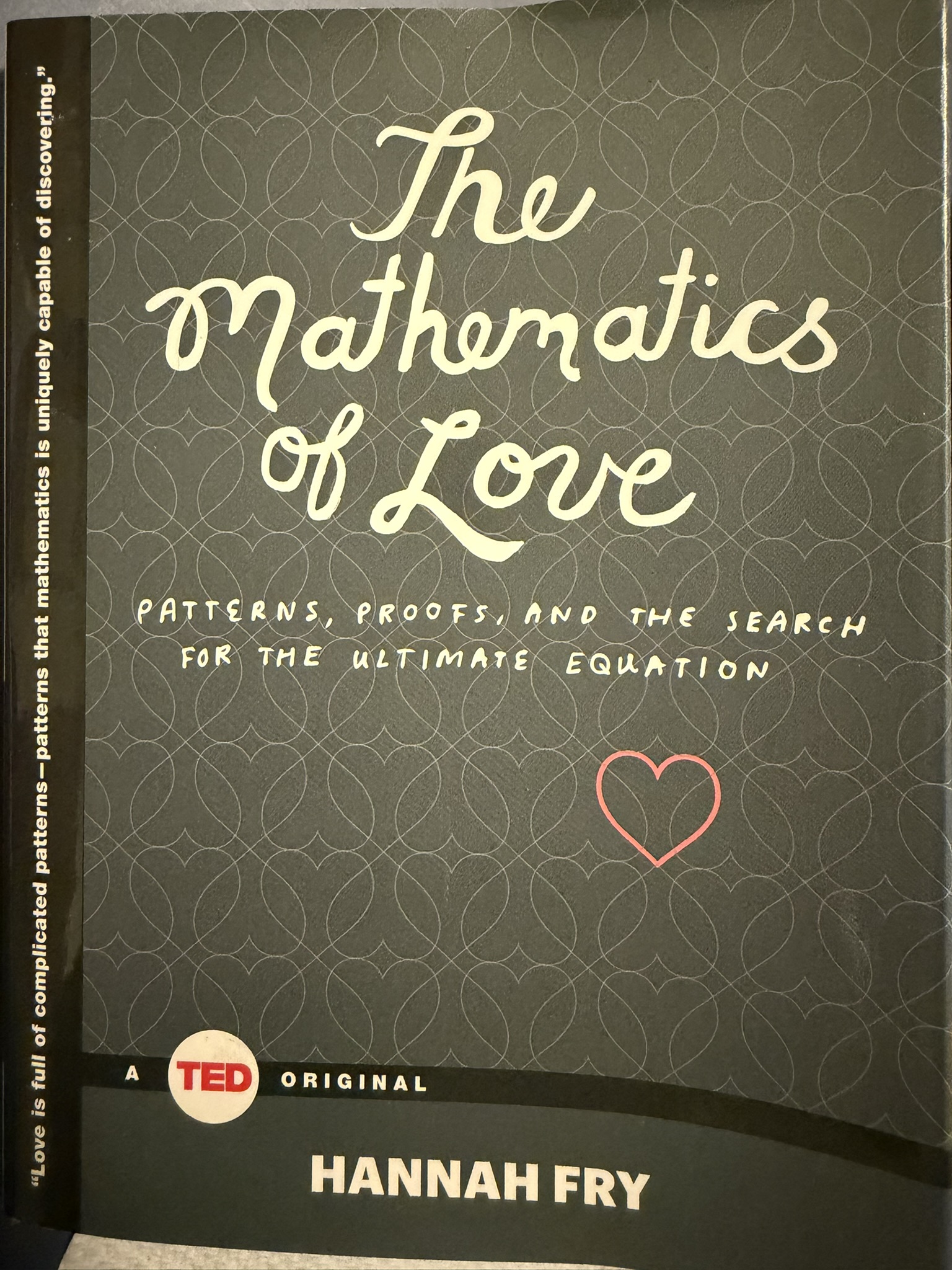01. October 2025
Experts calling this Undeniable proof of love

I’m lucky, loving you is very easy. We jokingly say we’ve been together through “the good times and the good”. Seriously though, I frequently hear people say relationships are work, relationships aren’t always pretty. Trust me I’m the biggest skeptic as they come, but the evidence I’ve seen so far is we have very easy compatibility, Three years and counting!
Ok so I did actually read “The Mathematics of Love” before cutting it up lol. So here’s what the experts have to say:
The researchers like to assign a postiivity / negativity score to relationships by observing partners reactions to behavior.. They determine is it the norm for them to be nice or mean? Selfless or Selfish? For example, if the husband is being grumpy, is the instant subsconsious reaction: a. He must be stressed and tried or b. There he goes again acting out the subsoncious reaction helps researchers determind the norm. Obviously, The positivity / negativity score of a relationship is used to predict happiness and success. Also worth noting that there’s an asymmetry between the good and bad. That is, there’s small benefits to a partner’s positivity, versus the large downsides of a partner’s negativity.
There is a threshold for how much negativity a partner will endure before speaking up. The team found the most successful relationships are ones with really low negativity thresholds. In those relationships, couples allow each other to complain, and work through small issues between them; which prevents bottling up emotions until they blow up out of proportion. How couples discuss issues is very important - Conversations should be be open with respect and understanding, rather than a partner saying they’re the victim of the other’s behavior, and blowing things out of proportion.
Our Relationship:
- Being nice is definitely the norm in our relationship. Sometimes I forget to feed Erin, but that’s another story..
- We do a really good job of discussing things. We’ve never yelled at each other, and I don’t think we ever will. We discuss like civilized people because we’re on the same team. -> I’d give us a high postivity score -> I’d give us a low negativity threshold
There ya have it ladies and gentlemen! Proof of love!
Here are some more interesting points from the book, that don’t apply as directly to this articles topic of our love, but figured I’d still share:
- decoy effect was interesting. if you visit parties with someone who looks similar to you, but slightly uglier, it boosts your chances lol. This is seen frequently in marketing, for example, at the movie theater the large popcorn is made more appealing by adding in a terribly priced medium popcorn, for just below price of large.
- humans can accurately predict personality traits just based on someone’s face. The human face reflects childhood levels of estrogen, testosterone, and androgen, which are also correlated with personalitly traits such as assertiveness, aggressiveness, easy goingness, etc. Researchers asked people what personality traits they prefer, and overlayed the faces of those they found attractive to make an average face, and distinct facial features emerged. They then surveyed people with these overlayed faces, asking who they thought was more assertive vs easy going for example, and people answered with 90% accuracy matching the initial group’s preference. Pretty crazy huh?
- A third of new marriages met online, 3/4 of young singles have tried online dating. For example, OKCupid has users answer 100s of questions about themselves, and how important the answer to that question is to you? Example: do you like dogs? How important is it that your partner likes dogs? And uses a sophisticated algorithm to match. But yet, people frequently matches still frequently dont get along.. This is referred to as missing chemistry, and a lack of accurately knowing what we want. OKCupid has publicly stated they’ve had limited success in finding long term compatibility. In an interesting study, they had okcupid lie about their match percentage. They lied to couples with low compatibility telling them they had very high compatibility. They found tiny margins between real success results between high compatibility couples, and low compatibility couples that were lied to and told they had high compatibility.
- Kinda cool… within minutes of meeting, interested potential partners have pupils dilate, word selection during conversation converges, laughter synchronize and bodily poses mirror one another. AKA “Non-conscious synchrony”. Apparently these are much more reliable indicators of compatibility.. There are new video analysis algorthims under development to try and use these better indicators.
- Interestingly, polarizing attractive people rank better on dating apps than conventially attractive. So when people’s looks are rated out of 5 stars, people who have very divided beauty ratings (lots of 1s and 5s) do better on dating apps (receive more messages) than people who are well accepted as attractive (lots of 4s and 5s). The data shows that 5 star ratings are best, followed by 1 star ratings (divided opinion is good for some reason).
- The eligible bachelor paradox - where are all the good men? Partner selection is like a blind auction, bidders don’t know how hard others are trying to get items. Typically, beautiful women don’t bid as high for men, because they assume they have lots of options due to being beautiful. They bid more passively, not trying as hard to win affection. This causes “good” men to date and marry less beautiful women who are bidding harder for them. The good men pool shrinks with time, leaving a lot of outlier hotties to panic as the 30s come around, crying out “where’d all the good me go?” Point being, no matter how hot you are, you shouldn’t be complacent.
- the game of cheating, with the lens of game theory. In a specific moment, the decision to cheat or not is equivalent to the prisoners dillema. You gain points, your partner loses points. However, there are a couple more variables at play: a) the decision is made over and over again, rather than just once and b) the game is played between the same 2 players over and over.. with the goal of achieving best long term score, rather than a specific moment. This situation has been solved by game theory in what is called the “tit for tat” strategy: cooperate at first, then simply copy the previous move of your opponent. In a literal sense. it plays like this: At first be faithful, then as long as your partner also chose to be faithful, you keep being faithful. But if your partner cheats, you should also cheat, and if they return to being faithful, you should do the same. The more realistic application of the strategy looks like: be nice to your partner. if they act poorly, have a measured response, then forgive quickly and return to being nice. It’s unoptimized to remain in the negative area. acting in the best interest of the team is optimal.
- To maximize the probability that you find a very good partner to marry, you can: decide what your upper limit of dating years is, lets say 40 years old. So 18-40 are your realistic dating years. The math argues that you should end every relationship for the first 37% of years (8 years), taking careful note of what you liked and didnt like in the relationships. Then once the rejection period ends, you should marry the first person who is better than all pervious relationships (better than all the people you rejected). If you loosen your target to someone in your top 5%, that percentage can be decreased to 22% (5 years).
- She discussed the optimal way to create a wedding invite list, and how to create an optimal seating chart. (chapter 8). Essentially just optimization algorithms. Worth looking into more later.

